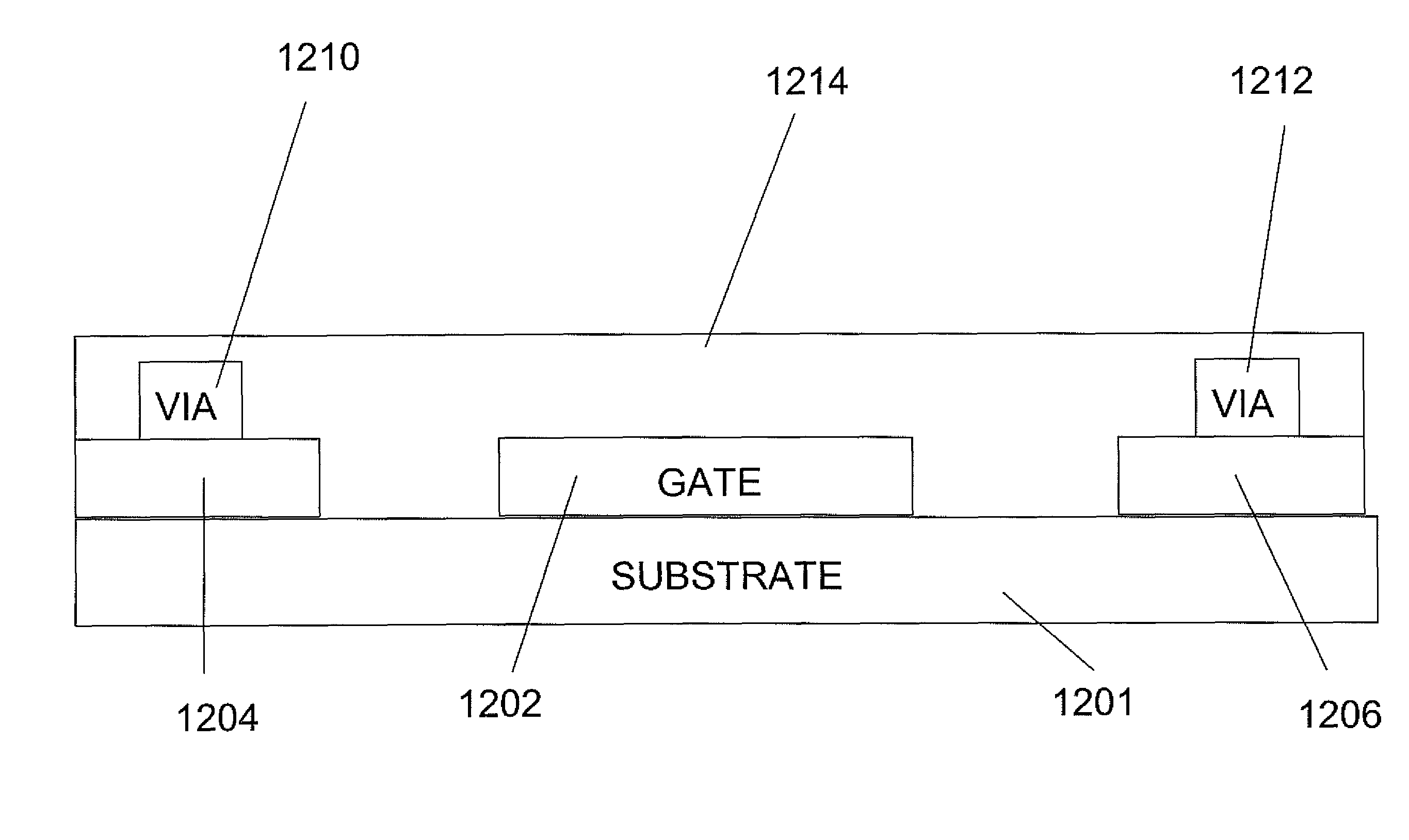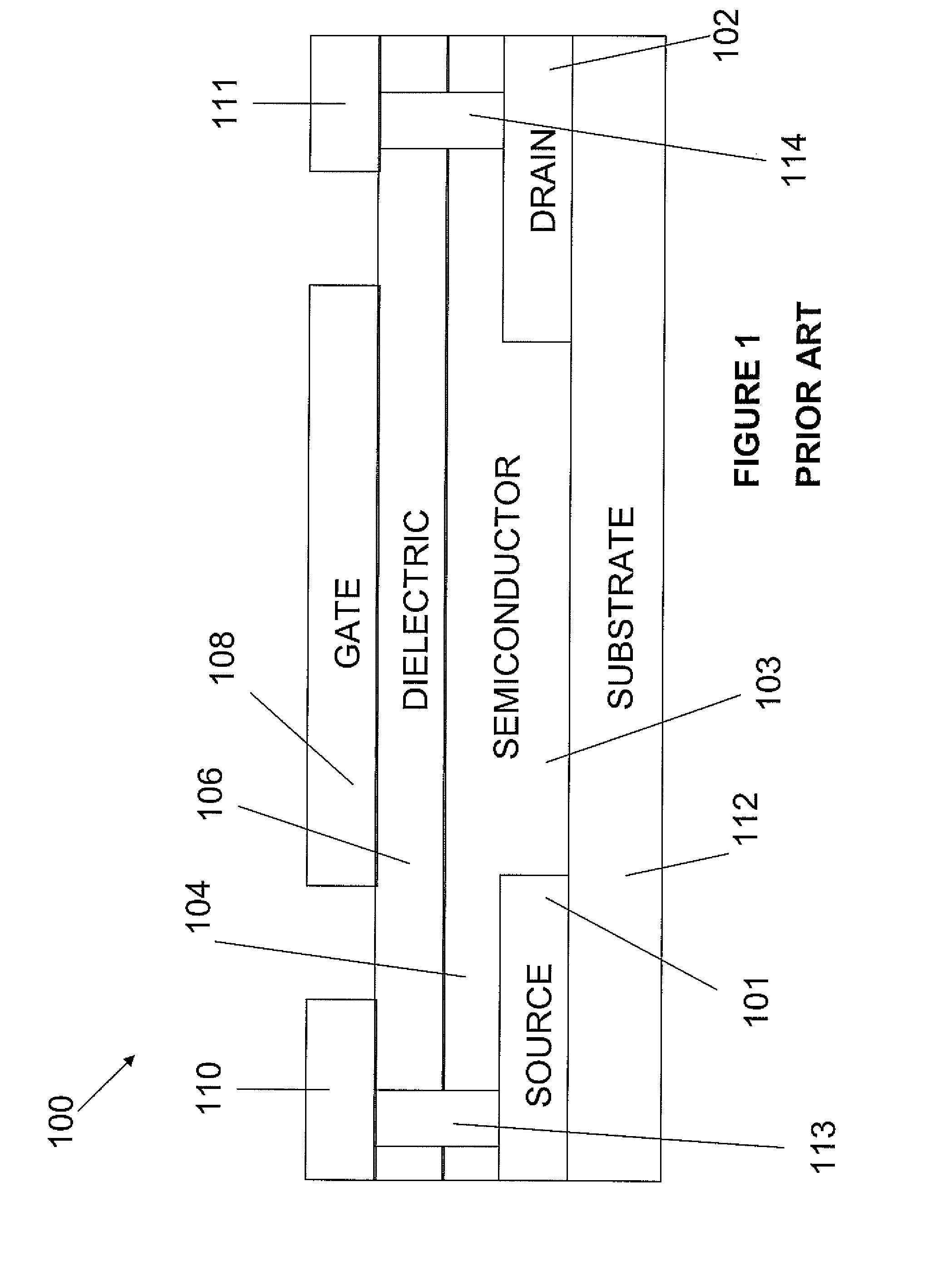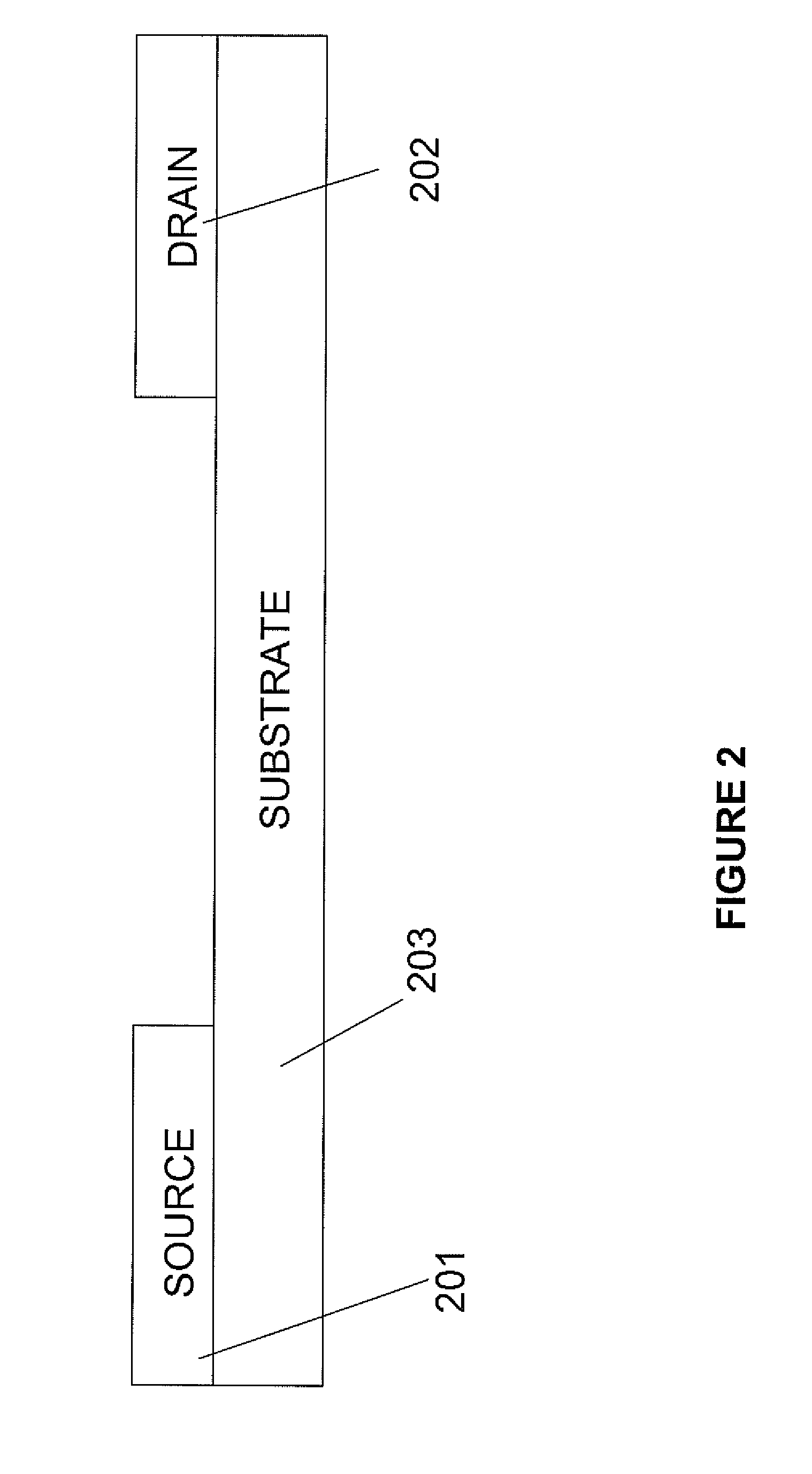Fabrication of self-aligned via holes in polymer thin films
a thin film, self-aligned technology, applied in the direction of semiconductor/solid-state device manufacturing, basic electric elements, electric apparatus, etc., can solve the problems of only partially cured or not cured post material, and achieve the effect of low cost and efficien
- Summary
- Abstract
- Description
- Claims
- Application Information
AI Technical Summary
Benefits of technology
Problems solved by technology
Method used
Image
Examples
Embodiment Construction
[0039]The via formation according to the present invention is described with respect to the fabrication of a top gate organic transistor in FIGS. 2-4 and 9-11 and with respect to the fabrication of a bottom gate organic transistor in FIGS. 12-18.
[0040]Referring now to FIG. 2, a source and drain conductor, 201 and 202, respectively, is patterned on insulating substrate 203. The source / drain conductor can be of any material that conducts electricity, including metals, conducting polymers, or nano-particle ink. The preferred deposition means depends on the material, including sublimation and evaporation of a solid source, or deposition by means of a liquid. Patterning can be achieved through a shadow mask, by directly depositing the pattern of interest, or by means of a deposition followed by removal of unwanted materials. The substrate must be electrically insulating, consisting of either flexible or rigid material. Flexible substrate materials include PET, PEN, Kapton, mylar, and pap...
PUM
| Property | Measurement | Unit |
|---|---|---|
| conductive | aaaaa | aaaaa |
| dielectric | aaaaa | aaaaa |
| height | aaaaa | aaaaa |
Abstract
Description
Claims
Application Information
 Login to View More
Login to View More - R&D
- Intellectual Property
- Life Sciences
- Materials
- Tech Scout
- Unparalleled Data Quality
- Higher Quality Content
- 60% Fewer Hallucinations
Browse by: Latest US Patents, China's latest patents, Technical Efficacy Thesaurus, Application Domain, Technology Topic, Popular Technical Reports.
© 2025 PatSnap. All rights reserved.Legal|Privacy policy|Modern Slavery Act Transparency Statement|Sitemap|About US| Contact US: help@patsnap.com



